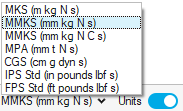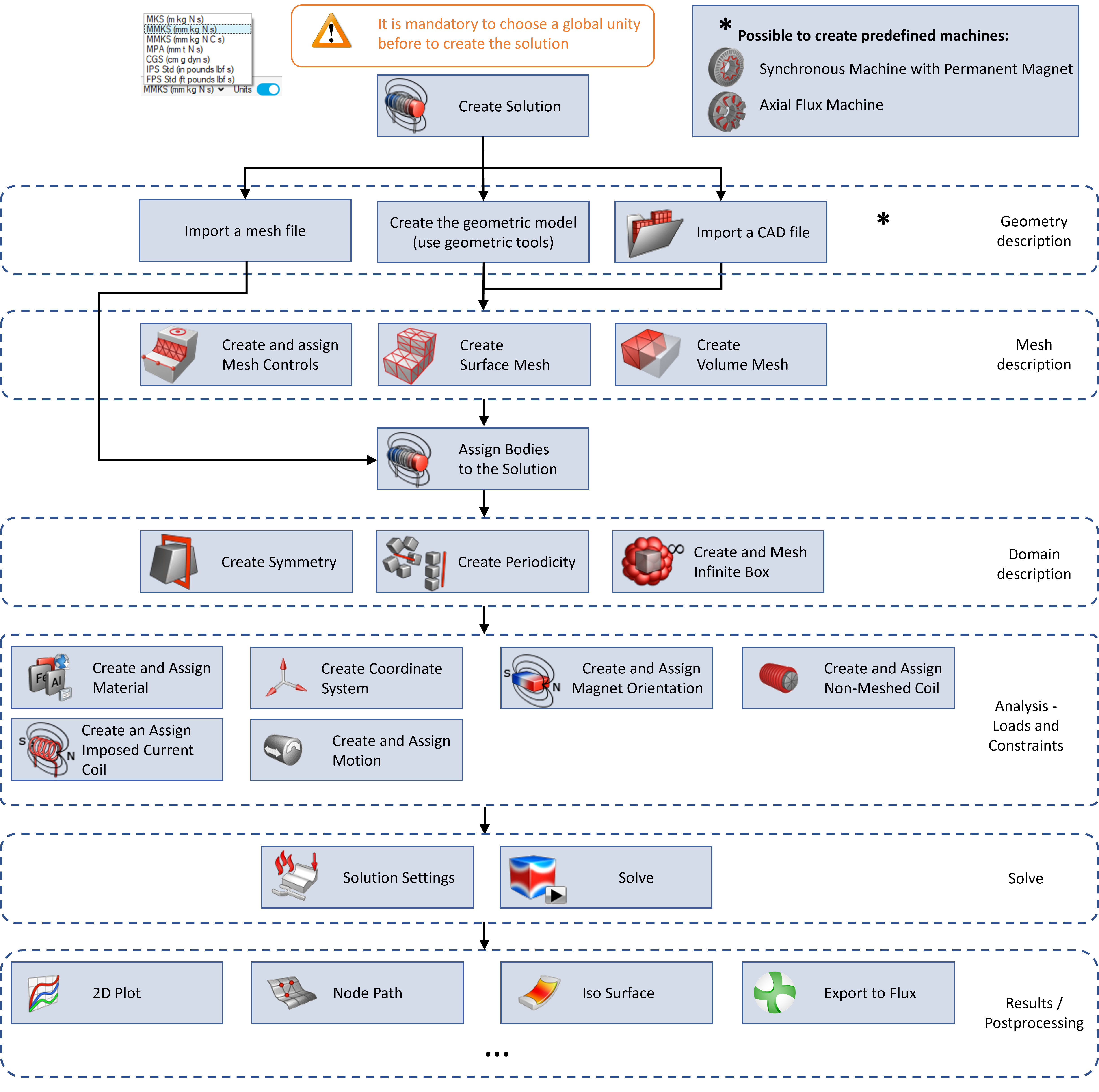Introduction of 3D Magnetostatic
Presentation
The Magnetostatic solution allows the user to study the phenomena created by a magnetostatic field. The magnetic field is related to the presence of DC currents (stationary currents) and/or of permanent magnets.
Use
The Magnetostatic application can be used to model different devices.
Thus, we can compute:
- he magnetic field in the structures with magnets for particle accelerators, spectrometers or MRI magnets, attenuation of the magnetic field due to the magnetic shieldings, the field of magnetic reading heads
- the forces in magnetic bearings, in the electromagnets and in the contactors
- the torques in rotating machines and micromotors
- the self-inductance and mutual inductances of different devices (transformers, coil-ends of rotating machines...)
3D Magnetostatic workflow
A graphic view of the 3D Magnetostatic workflow with functionalities possibles is presented below.
All functions are available in the different ribbon bars Geometry, Mesh, Analysis, ...
The content of each ribbon is adapted depending on the active solution.
A unit system is selected by default (MMKS (mm Kg N C s)). If not, to define the global unit system:
- activate

- choose the unit system

For more details on Unit System, please refer to the main page Unit System.

Main 3D Magnetostatic Limitations/Advices
Some functionalities of Flux for a 3D Magnetostatic Application are not available in this version in SimLab:
- It's mandatory to define an unit system before defining a 3D Magnetostatic solution. Without an unit system, the solving will not be carried out (limitation in the Flux solver)
- Periodicity in translation is not available (only the rotation is available).
- Specifically with Linux OS, it is mandatory to have a Solution with a name without "space" (attention: the default name contains "space").
- After to Import a mesh file via
(if you should add symmetry and/or periodicity) it is mandatory to do on the solution bodies in order to assign the topology information on the faces. This allows then to select faces for symmetries or periodicity.
If some features are missing in SimLab for the simulation (material model, …), it is possible to Export and open in Flux (Flux legacy) at any time to continue the simulation set-up and solving, as long as the bodies are meshed and assigned to the solution.
Use the right click on the Solution to open the contextual menu, and click on Export and open in Flux.→ The SimLab Database *.slb is converted into a project *.FLU.
→ This project *.FLU is created in the selected working directory and Flux is automatically launched and this project *.FLU is opened.
→ Then you can use this project in Flux.